
- Homepage
- Age
- 100-150yrs Old (2)
- 1800-1849 (46)
- 1850-1899 (279)
- 1868 - 1912 (3)
- 1868-1912 (4)
- 1890-1920 (2)
- 1900-1920 (3)
- 1900-1940 (240)
- 19th Century (9)
- Antique (4)
- Circa 1900 (7)
- Circa 1930 (2)
- Meiji Period (4)
- Post-1940 (93)
- Post-1940 ? (8)
- Post-1950 (5)
- Pre-1800 (23)
- Unknown (70)
- 1900 (3)
- 1910 (3)
- ... (3324)
- Pattern
- Size
- Subject
- Theme
- Type
- Bookends (40)
- Candle Holder (24)
- Candle Holders (18)
- Candlesticks (26)
- Chairs (17)
- Figurine (49)
- Figurines & Statues (14)
- Lamps (43)
- Metal & Ironwork (14)
- Painting (325)
- Plates (16)
- Print (87)
- Sconce (149)
- Sconce Bronze (15)
- Sconces (16)
- Sculpture (36)
- Statue (35)
- Table Lamp (77)
- Vase (112)
- Vases (51)
- ... (2970)
Antique Pair signed Chinese Bronze Censer Incense Burner
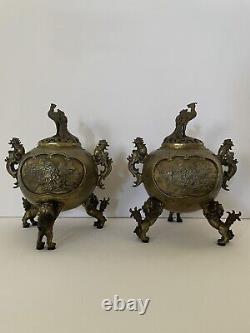
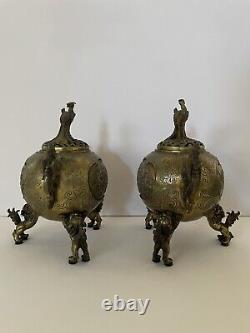
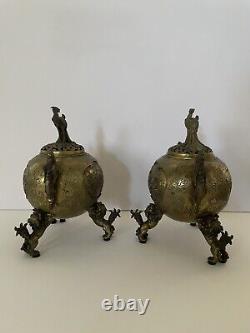
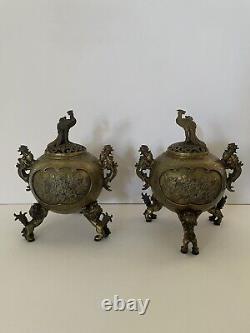
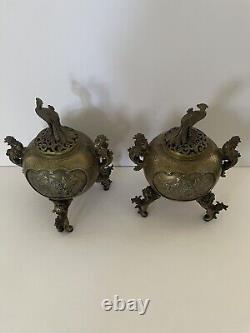
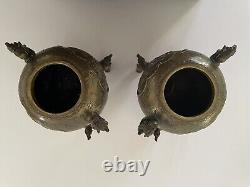
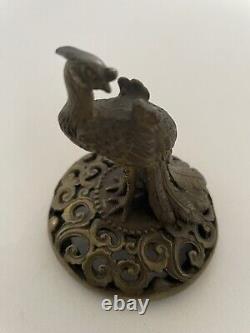
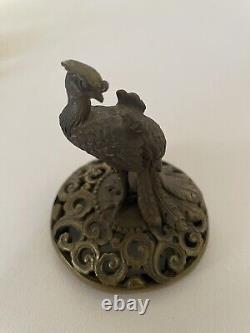

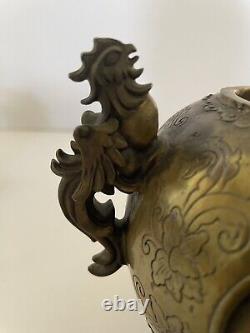
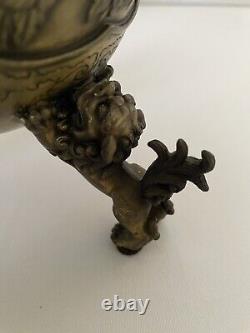
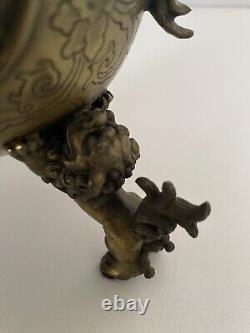
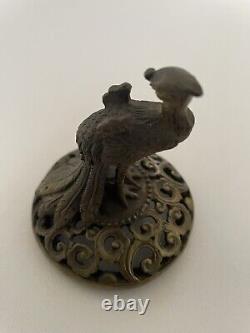
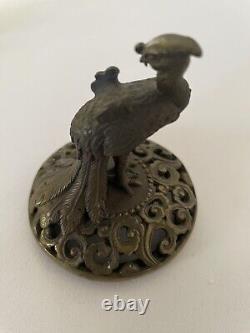
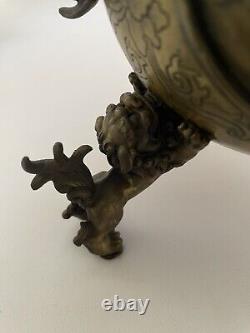
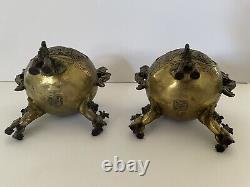
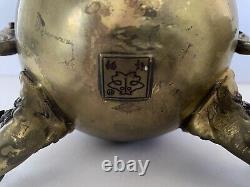
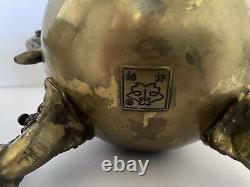
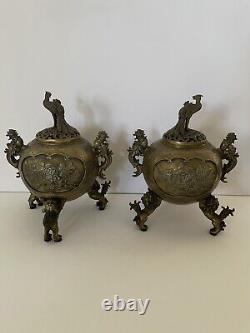


We have for you a pair of exquisitely detailed antique bronze Chinese Censer's. Three iconic symbol's the Foo Dog, Rooster and Peacock all represented. The three foo dogs are holding up the main bowl.
Either side is flanked with a pair of rooster handles and the lid is crowned with a standing peacock over a transom to let the smoke through. Foo dogs are symbolic, protective statues usually designed in pairs one, female the other male. The female represents yin, and symbolically protects the people dwelling inside the home, while the male statue, representing yang, protects the structure itself. Representing fidelity and punctuality, the Rooster is the tenth in the 12-year cycle of the Chinese zodiac signs. In Chinese culture, the rooster carries a symbolic Significance with generally auspicious connotations.
For ancestors, rooster crowing was a notable sign as it awakens people and ends darkness. In China, the peacock was a symbol of the Ming Dynasty, representing divinity, beauty, power and rank. With its tail of a 100 eyes, the peacock is also associated with the goddess of compassion Guan Yin. Incense has a long history in China, dating back to Neolithic times. For significant periods of history, it was an essential part of life, especially for the imperial palace and the intellectual class.
An incensed space and incensed person was a show of wealth, and sometimes more importantly, a show of sophisticated taste. The Chinese word "xiang" means "fragrance", "scent", "aroma", "perfume", and "spice", which has a far broader definition than the English word "incense". This somewhat reflects the pervasive role incense had in historical Chinese society.

